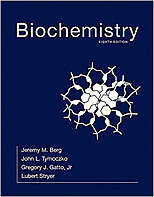
Biochemistry
Berg, Jeremy M.; Tymoczko, John L.; Gatto, Jr., Gregory J.; Stryer, Lubert
8 ed.
New York: W.H. Freeman and Company, 2015
 |
Biochemistry Berg, Jeremy M.; Tymoczko, John L.; Gatto, Jr., Gregory J.; Stryer, Lubert 8 ed. New York: W.H. Freeman and Company, 2015 |
36 termes
| magnesium ion-binding site n. |
|
| major histocompatibility complex protein n. (MHC protein) |
|
| major histocompatible complex n. (MHC) |
|
| MALDI-TOF n. |
|
| MALDI-TOF mass spectrometer n. |
|
| MALDI-TOF mass spectrum n. |
|
| malic enzyme n. |
|
| malonyl transacylase n. |
|
| malonyl/acetyl transacylase n. (MAT) |
|
| mammalian liver homogenate n. |
|
| manganese center n. |
|
| mannose 6-phosphate receptor n. |
|
| matrix-assisted laser desorption/ionization n. |
|
| megasynthase n. |
|
| membrane surface n. |
|
| membrane-spanning |
|
| memory B cell n. |
|
| memory T cell n. |
|
| metabolic derangement n. |
|
| metamorphic protein n. |
|
| MHC protein n. (major histocompatible complex protein) |
|
| Michaelis-Menten model n. |
|
| minor-groove interaction n. |
|
| minor-groove side n. |
|
| mitochondrial ATP-ADP translocase n. |
|
| mitochondrial biogenesis n. |
|
| mitochondrial mutant n. |
|
| mitochondrial outer membrane permeabilization n. (MOMP) |
|
| molecular heterogeneity n. |
|
| molecular-imaging agent n. |
|
| Moloney murine leukemia virus n. |
|
| MOMP n. (mitochondrial outer membrane permeabilization) |
|
| multiple covalent bond n. |
|
| multiple weak attraction n. |
|
| muscle-relaxation pathway n. |
|
| myogenin n. |
|